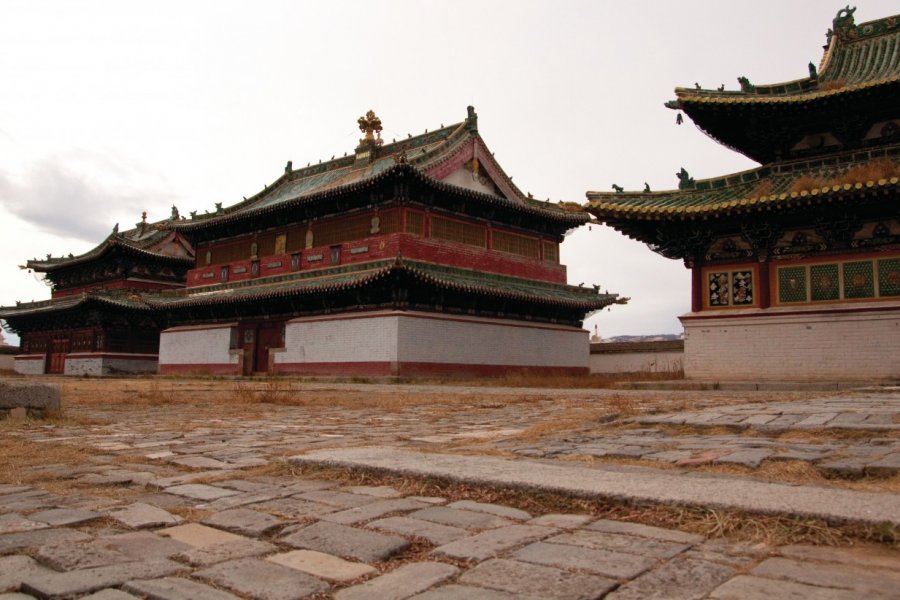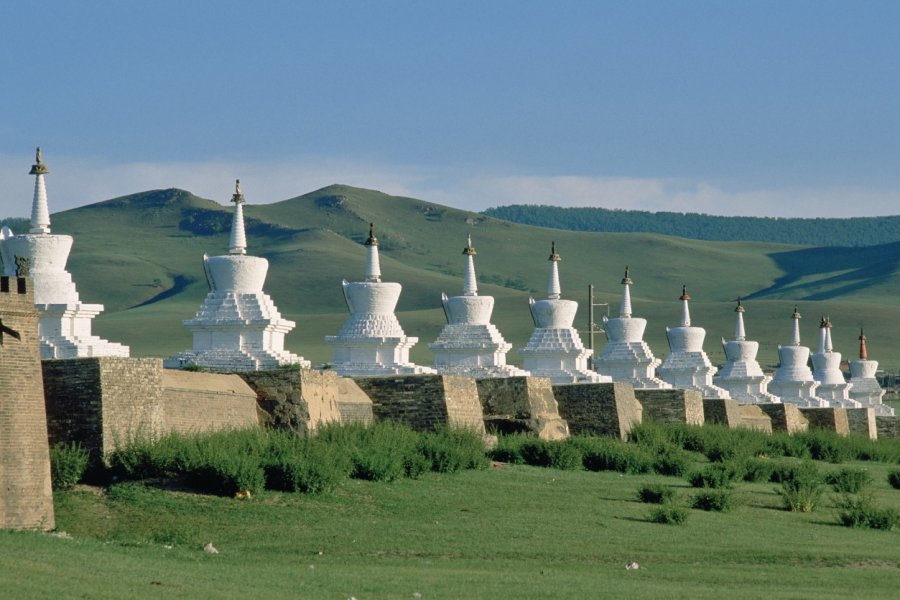Travel Guide Kharkhorum
Find an accommodation
Advertising
It was in 1220 that Chinggis Mountain decided to install his capital in Kharkhorin. What looks like a large camp in pre-filled, is partially built in hard by the son of Chinggis Mountain, Ogödeï. Kharkhorin will then serve as administrative, commercial and cultural capital for years until Kubilaï Khan installs his capital on the site of the future Beijing, China.Hardly anything remains of the capital of the th century Mongolian Empire. Archaeological excavations carried out over the past few years have revealed only a tiny portion of this vast city whose walls covered a square of 4 000 metres aside. At the moment, three of the four tortues statues of the city's stelas have been found. One is now exposed to the Ulaanbaatar Museum, the other is on a hill overlooking the modern city and the third is visible outside the enclosure of the Monastère Züü monastery. As for the astonishing fountain in the centre of Kharkhorin, which is known by the descriptions of travellers to the Ogödeï court, no trace has been found so far. Although the city attracts a very large number of visitors, it must, of course, at the monastery of Erdene Züü, the first Buddhist worship built in Mongolia in the th century, on the ruins of the city of the XIII.Warning. On maps and books, Kharkhorin appears under several spellings. We chose "Kharkhorin" closest to the Latin transcription of Cyrillic writing. But it is also possible to find "Kharakhorum", "Karakoroum" or "Kharkhorum".
Suggested addresses Kharkhorum
Weather at the moment
Advertising
Organize your trip with our partners Kharkhorum
Transportation
Book your plane tickets
Car Rental
Boat rental
Accommodation & stays
Find a hotel
Holiday rental
Find your campsite
Tailor-made trip
Immersion travel
Services / On site
Activities & visits
Find a doctor
Kharkhorum travel inspiration
Find unique Stay Offers with our Partners
Pictures and images Kharkhorum
Other destinations nearby Kharkhorum
5 km away
100 km away








